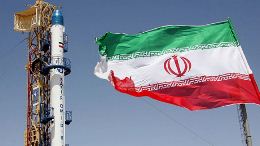 Iran says it sent a monkey into space Monday. In previous flights it sent rats, worms, and turtles into space. But the�US worries it may be perfecting it's long-range missile technology.
Iran says it sent a monkey into space Monday. In previous flights it sent rats, worms, and turtles into space. But the�US worries it may be perfecting it's long-range missile technology.According to a brief report on state TV, the rocket dubbed Pishgam, or Pioneer in Farsi, reached a height of 120 kilometers (72 miles). The report gave no other details on the timing or location of the launch, but said the monkey returned to earth safely.
Iran has long said it seeks to send an astronaut into space as part of its ambitious aerospace program, including plans for a new space center announced last year. In 2010, Iran said it launched an Explorer rocket into space carrying a mouse, turtle and worms.
Compared with other nations, these don't represent a major breakthrough. As�The Christian Science Monitor noted last year:
France�flew the first rat into space in 1961, and�China�launched mice and rats in 1964 and 1965. The�Soviet Union�launched the first tortoise into space in 1968, along with a few worms. In addition, among other specimens, over the years, mankind has also put�Madagascar�hissing cockroaches, Mexican jumping beans, and�South African�flat rock scorpions into space.
But the�U.S.�and its allies worry that technology from the space program could also be used to develop long-range missiles that could potentially be armed with nuclear warheads. Iran denied it seeks atomic weapons and claims it is pursuing nuclear reactors only for energy and medical applications.
Iran has announced several successful launches of satellites, dating back to 2005 in a joint project with�Russia.
Tehran has not given details of its planned new space facility, but it already has a major satellite launch complex near�Semnan, about 200 kilometers (125 miles) east of Tehran. A satellite monitoring facility is located outside Mahdasht, about 70 kilometers (40 miles) west of the Iranian capital.
Iran says it wants to put its own satellites into orbit to monitor natural disasters in the earthquake-prone nation, improve telecommunications and expand military surveillance in the region.
By The Christian Science Monitor
The Iran Project is not responsible for the content of quoted articles.










